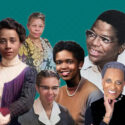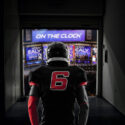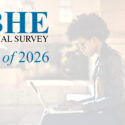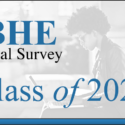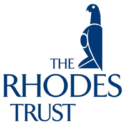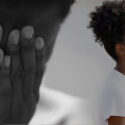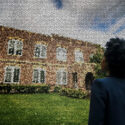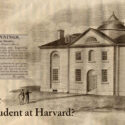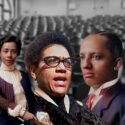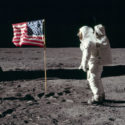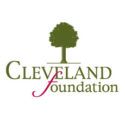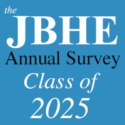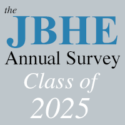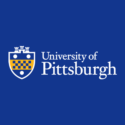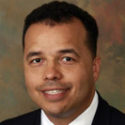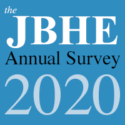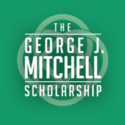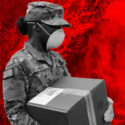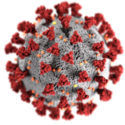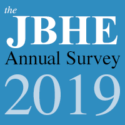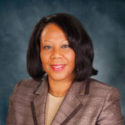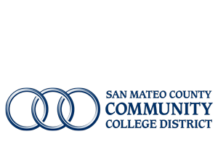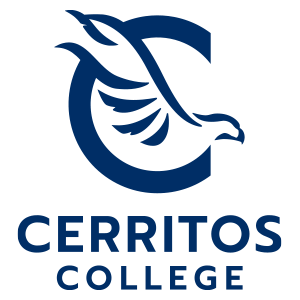Tag: featured
Managing Cultural Audacity in the HBCU Environment
Tuskegee University provost Keith Hargrove argues that ultimately, accountability and responsibility are things that everyone in the HBCU community must share.
The Arduous Quest of African American Women CEOs in the Academy: The GOATS
Dr. Algeania W. Freeman traces the ascendancy of African American women to the highest posts in academia, from early pioneers to the new president of Harvard University.
Striking a Balance: Preserving the Essence and Embracing Diversity at HBCUs
As their demographics evolve, it is crucial for HBCUs to strike a balance between increasing diversity and preserving their unique culture and purpose. Analysis by Mashref Hoque
The Widening Divide: HBCUs and the 2023 NFL Draft
Dr. Al-Tony Gilmore explores the scarcity of NFL draft prospects emerging from HBCU football programs, asserting that HBCUs possess the ability and should thrive independently of the league's validation.
We Must Protect This House: Guarding Black Women College Athletes
Authors Jewel Clark and Rachel Wilson Patterson examine the double standard applied to Black and White athletes and the need to affirm, uplift and celebrate Black women athletes.
Black First-Year Students at the Nation’s Leading Liberal Arts Colleges
For the first time in the 30-year history of the JBHE surveys, a college has enrolled a first-year class that is more than one-fifth Black. There are 96 Black students in this year's entering class at Amherst College. They make up 20.6 percent of the total.
Black First-Year Students at the Nation’s Leading Research Universities
The progress of the Ivy League schools over the past decade in admitting Black students has been impressive. In 2006, Columbia University had the highest percentage of Black first-year students at 9.6 percent. This year, all eight Ivy League schools have entering classes that are 12 percent Black or higher.
Traveling While Black: The HBCU Sports and Student Experience – In the Rear View Mirror of Historical Context
Dr. Al-Tony Gilmore discusses recent controversial police stops of buses carrying HBCU students.
African Americans and Rhodes Scholarships
Typically the Rhodes Trust does not reveal the race or ethnicity of scholarship winners. Of this year's 32 Rhodes Scholars from the United States, it appears that four are African Americans.
Effective Coping Methods for Black Educators and Students Exposed to Trauma
A physician and a medical student reflect on the current climate of our nation during the continued murders of unarmed African Americans and methods educators and medical students can use to cope with these traumatic experiences to remain effective in their professional responsibilities and development.
Emerging Paradigms for HBCU Leadership: Reflections of a New Provost
S. Keith Hargrove reflects on his new role as provost at Tuskegee University, how the past two years have reshaped the landscape for HBCUs and the transition educational leaders must undertake to meet the moment.
Thomas Jinnings: The First Black Student at Harvard?
Who was the first African American student at Harvard? This question is not as easy to answer as one might think – and, with the recent discovery of a name buried in an 1841 Harvard catalogue, a new possible answer has come to light.
Why I Am “Critical” of Critical Theory
Bakari K. Lumumba, a doctoral candidate at Ohio University's Patton College of Education's Higher Education Student Affairs program, examines Critical Theory and its unwillingness to center the work of scholars and theorists outside the Western / European sphere of influence.
How an HBCU Hosted the Inaugural International Moon Day Celebration
Elijah Baker, a public relations coordinator at historically Black Drake State Community and Technical College in Huntsville, Alabama, shows how HBCUs have played a role and will continue to play a role in the U.S. Space Program.
Four African Americans Honored With Anisfield-Wolf Book Awards
The Cleveland Foundation's annual Anisfield-Wolf Book Awards are the only national juried prize for literature that confronts racism and explores diversity. Four of the winners this year are African Americans who have academic ties.
Travis Hunter and The Move Toward Black Power
Bakari Lumumba examines a top football prospect's "flip" from a major NCAA football program to an HBCU, its historical antecedents and how it may be a catalyst for future empowerment.
Black First-Year Students at the Nation’s Leading Research Universities
Recent admissions cycles have been significantly impacted by the COVID-19 pandemic. But most of the nation's leading research universities continue to make significant progress in increasing Black enrollments.
Black First-Year Students at the Nation’s Leading Liberal Arts Colleges
There are 100 Black students in the Class of 2025 at Amherst College. They make up 19.5 percent of the class. This is the largest percentage of Black students in an entering class in the history of our surveys.
HBCUs: At the Financial and Competitive Crossroads of College Sports
Dr. Al-Tony Gilmore examines the state of athletics at the nation's historically Black colleges and universities.
Eight African American College Students Selected as Rhodes Scholars
This year, eight African Americans were chosen as Rhodes Scholars. In both 2017 and 2020, there were 10 African American Rhodes Scholars, the most in any one year.
University of Pittsburgh Adds Large Group of Black Faculty
The University of Pittsburgh has announced a large group of new Black faculty members who comprise the first cohort of its Race and Social Determinants of Equity, Health, & Well-Being Cluster Hire Initiative.
For the Sake of Racial Justice and Equity, Time to Eliminate Standardized Testing
Racial & ethnic differences in performance on standardized exams are irrefutable. Yet, standardized exams continue to be used in admissions & scholarship decisions across every stratum of postsecondary education.
The Rise, Collapse, and Legacy: HBCU Football and the NFL Draft
Currently, nearly 10 percent of Black players in the National Football League Hall of Fame are alumni of HBCUs. That percentage will inevitably decline, but that history, too, cannot be erased. HBCUs were in the vortex of the racial transformation of the NFL.
Black First-Year Students at the Nation’s Leading Liberal Arts Colleges
In 2009, only three of the nation’s high-ranking liberal arts colleges had entering classes that were at least 10 percent Black. This year, despite the pandemic, there are eight leading liberal arts colleges that have an entering class that is at least 10 percent Black.
Black First-Year Students at the Nation’s Leading Research Universities
In 2004, only two of the nation’s highest-ranked universities had incoming classes that were more than 10 percent Black. This year there are 16 with an entering class that is more than 10 percent Black.
Four African Americans Named Mitchell Scholars
The US-Ireland Alliance recently announced the 12 members of the George J. Mitchell Scholar Class of 2022. Four of the 12 Mitchell Scholars this year are African Americans.
Ten African Americans Are Among This Year’s 32 Rhodes Scholars From the United States
This year, 10 African Americans were chosen as Rhodes Scholars. In 2017, there were also 10 African American Rhodes Scholars. This is the most in any one year in the history of the scholarship.
HBCUs Should Lead the Way in Disaster Preparedness in Their Communities
Most of the nation's 104 historically Black colleges and universities are in southern states, and many of the HBCUs in these states are located in, or close to, poor-resourced communities with high housing density. These locations are prone to intense flooding, hurricanes, drought, and other natural disasters.
The New African American Members of the American Philosophical Society
This year 28 Americans were elected to the American Philosophical Society. Six of the new members are African Americans.
COVID-19 Will Force HBCUs to Revamp Their Business Models
Professors Al-Tony Gilmore and Walter C. Farrell Jr., both alumni of HBCUs, offer their views on how the global pandemic will impact the bottom lines of the nation's historically Black colleges and universities.
RIP George Floyd
Rest In Power ... click through to #BLM
How Black Colleges Must Prepare Now for the Coming Enrollment Bust
Professor Terrell L. Strayhorn looks at how the projected significant drop in college enrollments will impact the nation's historically Black colleges and universities.
Black First-Year Students at the Nation’s Leading Research Universities
After requesting data on Black student acceptance rates from 29 leading universities this year, we received data from only nine schools. When JBHE began collecting this data in the early 1990s, almost all high-ranking universities complied with our request for data on Black student acceptance rates.
Black First-Year Students at the Nation’s Leading Liberal Arts Colleges
This year, Amherst College once again sits on top of the survey. There are 81 Black students in this year's entering class. They make up 17.2 percent of the first-year class.
Anti-Blackness in American Higher Education
Bakari Lumumba details how African American student college opportunities continue to be limited by structural disadvantages and systematic racism and how to contest them.
Hate Crimes on College Campuses and in Higher Education Spaces
Today’s college students of color are demanding safety, protection and accountability from their schools, administrators, politicians, and the country.

